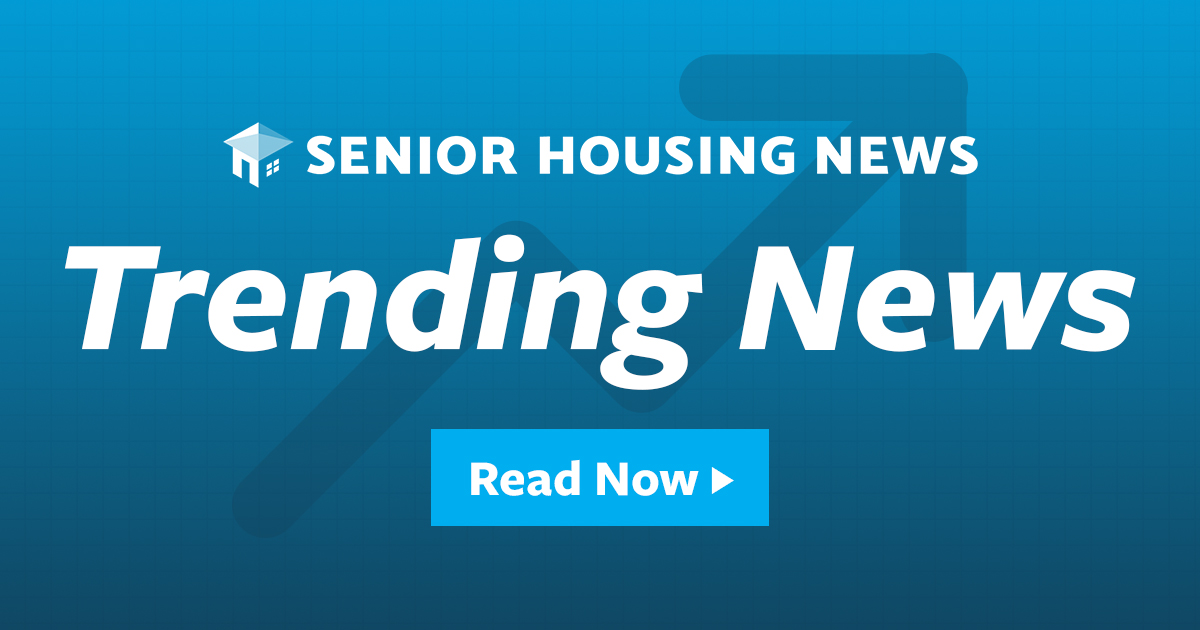Juniper CEO: 6 Mindshifts Needed to Deliver on Promise of Senior Living in 2024 and Beyond
By: Lynne Katzmann
Change is hard. Senior living providers have discovered that repeatedly in recent years, as they have tried to adapt and evolve to new consumer preferences, new payment models, new technology, and other challenges and transformations.
Change is really hard if you don’t understand the “why” behind the change. Said another way, change will simply not happen at scale if people don’t 1) understand the reason for the change and 2) don’t believe it will make life better.
So, the first step in the change process is fostering a mind shift — offering an alternative to what exists or is believed to be right today and fostering an understanding of why a new way of thinking and ultimately, acting is necessary.
Here is my list of the 6 most important shifts we in senior living need to make in 2024, and my thoughts on why I believe these are so crucial to the future of the industry.
Prevention, not intervention
We need to promote prevention, shifting from a focus on medical intervention when a condition worsens. Being proactive is better than being reactive.
The most important mindshift we as Americans need to make is to understand that prevention, lifestyle management, and chronic care management are keys to wellspan — living longer better. As we have been reminded over and over, medical intervention contributes only 10% to overall health while lifestyle and where you live (housing) contribute 60%.
Moving from medical intervention to prevention is a big shift but one that is critical if we are to promote wellspan and keep the U.S. Treasury intact. Consider the following:
- According to a study by the Institute of Medicine, missed prevention opportunities cost the US $55 billion every year, or approximately 30 cents on every health care dollar.
- Chronic diseases that are avoidable through preventive care services account for 75% of the nation’s health care spending and lower economic output in the United States by $260 billion dollars a year, according to the CDC. Preventive care services can help reduce the risk of chronic diseases and improve health outcomes, which can lead to lower health care costs in the long run.
- Also according to the CDC, preventive care services can reduce health care costs by up to $5.60 for every $1 invested. Said another way, an investment of $10 per person in proven, evidence-based community prevention programs to increase physical activity, improve nutrition, and reduce tobacco use could save the country more than $16 billion annually — a $5.60:1 return.
Recasting ‘care’
We need to recast “care” provided to older adults as lifestyle support and management.
If we support prevention where lifestyle and chronic disease management are fundamental, then we need to make sure our language is in sync. While I realize that many of us are only starting to accept our role in health and wellspan, there is really no better time than now to redefine the “care” we provide.
This is a mindshift we should welcome; boomers are seeking wellspan (longevity, where the added years are quality years). The number of media outlets talking about the desire for quality longevity has exploded. Whether the topic is covered by PBS, The New York Times or a new book on the positive impact of Keto or the Apollo program, it’s clear that the desire and avenues to seek wellspan are expanding.
It goes to say then that we should lead rather than follow in redefining what we do. After all, lifestyle and chronic disease management are and have long been core competencies of senior living. Finally, what we do is in vogue. Let’s make sure we — and our consumers — know it.
Tech as enabler
Technology is the new “it” thing. It’s sexy because it’s new, young, and in some ways, its best parts are hidden from view. I believe, as do many others, that technology has and will continue to change our world and that this digital revolution is the equivalent of the 19th century Industrial Revolution. With so much hype, it’s clear to see why technology companies have been in the driver’s seat rather than investors or end users.
I have great hopes for technology and believe in the school of thought that technology can improve the human situation, if used properly. For more than a decade, we’ve been evaluating and frankly using many new pieces of technology in our industry.
Most of these devices and their software being offered to us at every turn, at least up until now, do a particular thing or fulfill a particular function. If this is what your company needs to improve its business, great. But I have found that no single piece of software or even device can work without two things: other devices and other software, particularly those that integrate these various devices and software; and human beings to steer the development of the new technology and data pools in ways that support providing quality housing and services for America’s older adults.
The mindshift I am calling for is simple. I think it is one of my most important takeaways from the last decade. Technology is not an end in itself. Technology needs to be used to improve the human condition. Technology is an important and evolving enabler for people, for systems, and for innovation that will ultimately change the way we live and work.
High-tech, high-touch must be the mantra
A high-tech, high-touch approach that combines technology with human interaction has been shown to be more effective than technology alone in improving health outcomes for older adults. Thinking that technology alone is a panacea will not work. We must adopt the mantra “high-tech, high-touch,” particularly in senior living.
Here is some research to back that up. According to a study by CareMetx, a high-touch primary care model that pairs technology innovation with more traditional approaches like social work can lead to better patient outcomes and lower costs. In addition, a high-tech, high-touch approach can help older adults manage their own care. According to Managed Healthcare Executive, tech tools can help older adults manage their own care, but health care organizations must provide them with technology-powered care, versus tech on its own.
At Juniper, that mindshift or adoption of the high-tech, high-touch mantra is what made Connect4Life (our integrated care and support program) work so well. It is now the backbone of our lifestyle management program, Catalyst.
Becoming health care citizens
We are all health care citizens with both rights AND responsibilities for our own health.
My friend and colleague Jill Vitale-Aussem, the CEO of Christian Living Communities, has written extensively about citizenship in senior living. In a recent blog posting she wrote, “The traditional approach in senior living is to view older people as customers or consumers of services. You can see that reflected in advertising promising a carefree life of leisure – kind of the resort or cruise ship approach.”
Our residents and frankly we (operators) have taken the “we are here to serve you” approach for years. We thought it was what the market wanted, and we thought it would help us fill buildings. The 50s and 60s concepts of retirement supported this on both sides.
But really, since when does anyone on a cruise ship or at a resort entirely absolve themselves of responsibility for their wellbeing? Particularly today, post-Covid, we know better. We make decisions on food, activities, and with whom we spend time. If residents are honest, they do want control; they want rights. But in what world do any of us really have rights without some measure of responsibility?
That responsibility is ever more critical today. With chronic disease as the No. 1 killer, how we live our life matters. If you have diabetes, what you eat matters. Staying as fit as possible is important for heart health. The list goes on.
The National Institute on Aging recommends that older adults stay active, make healthy food choices, get enough sleep, limit alcohol intake, and proactively manage their health care. Additionally, the National Institute on Aging has identified actions that older adults can take to help manage their health, live as independently as possible, and maintain their quality of life as they age. These actions include staying physically active, eating a healthy diet, getting enough sleep, managing stress, and staying socially connected.
These should be considered responsibilities. We as citizens of this country have rights to things like grade school and high school education. We also have the right and responsibility to vote.
Instead of an entitlement mindset, residents and operators alike must redefine rights and responsibilities of residency. Most importantly, if we are going to move the needle on longevity and/or health care costs, we must all become health care citizens.
Fair markets versus free markets
Fair markets that manage and assure real competition may be better for all stakeholders in American health care.
Way back when in the 1980s, an American economist by the name of Alan Enthoven wrote a book distinguishing the health care free market from a health care fair market. Deputy Assistant Secretary of Defense from 1961-65, at 93 he continues to hold a Stanford emeritus professorship. I became familiar with him when I was working in the first generation of managed care for Medicare beneficiaries.
He coined the term “managed competition” as a means to establish, or perhaps better said, assure true competition among health care providers. His thesis was that the U.S. health care system is inherently biased and unfair and that new policy will be needed to restore real competition. Hence the words: managed competition.
For me, managed competition is a mouthful. I prefer to think in terms of “fair markets.” The move from free to fair markets represents a major mindshift. America prides itself on its free market mentality. And yet, are any of our markets really “free”? Can big and small companies really compete on a level playing field? With social media using algorithms based on our viewing preferences, do we really get a full picture of an issue or product?
The idea of fair markets is to take some of the bias out of decision making; to share information and educate broadly. I do believe that this will foster a return to what we Americans hold dear, a truly free market where consumers’ money and say matters.
In all these areas I’ve outlined, change will not come easily or quickly, and will require a resolve that is constantly renewed. I think we need to challenge ourselves daily to use language and act in new ways. These mindshifts are a type of north star or reference point for each of us as leaders to use or point to in our discussions with others, whether they be colleagues, team members, or reporters or policy makers. The time is now to change and this is a first step for any of us willing to be on the path.

Lynne Katzmann is a recognized industry leader, who in 2020 was inducted into the American Seniors Housing Association (ASHA) Senior Living Hall of Fame. She is the founder and CEO of Juniper Communities, a Bloomfield, New Jersey-based provider with a portfolio across New Jersey, Pennsylvania, Colorado and Texas.
Editor’s Note: Today’s guest column on the potential for a “business bonanza” in 2025 comes from Manward Press Chief…
Copyright © 2025 Retiring & Happy. All rights reserved.








